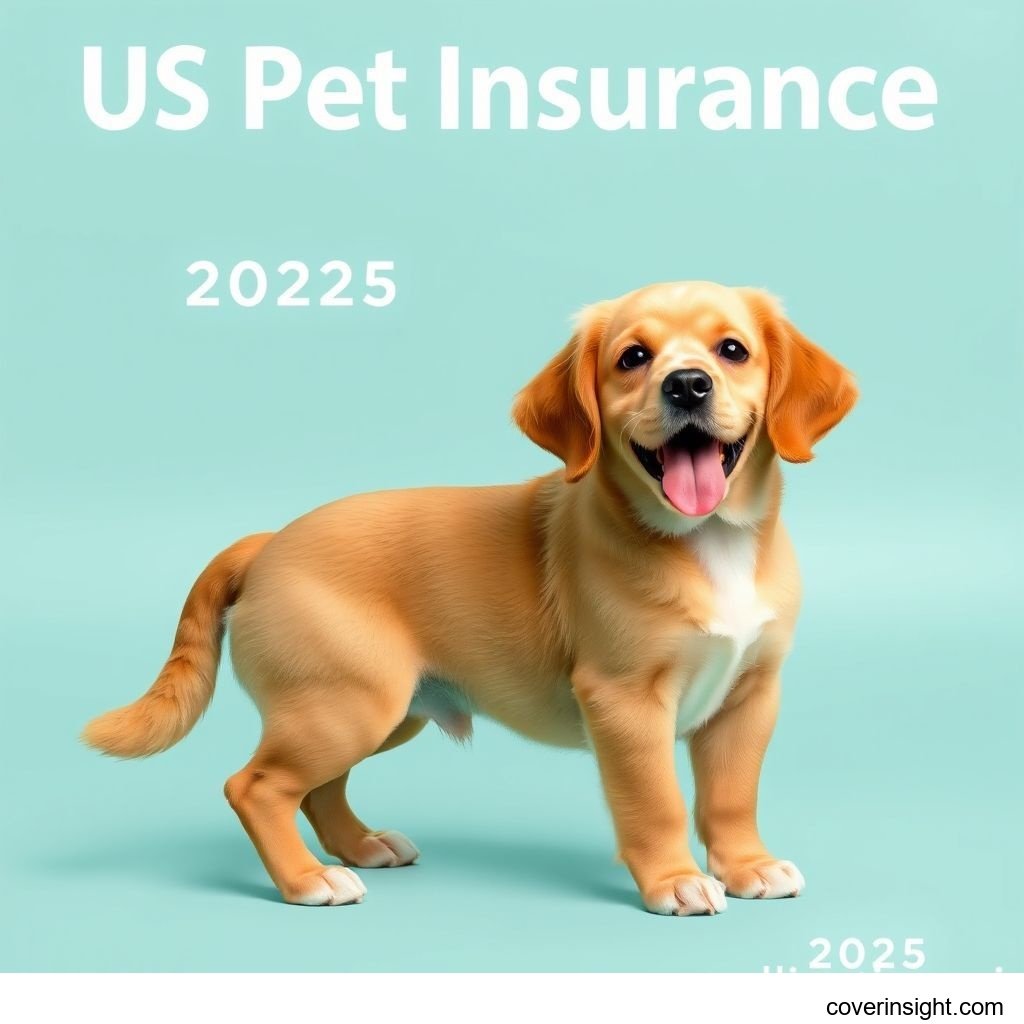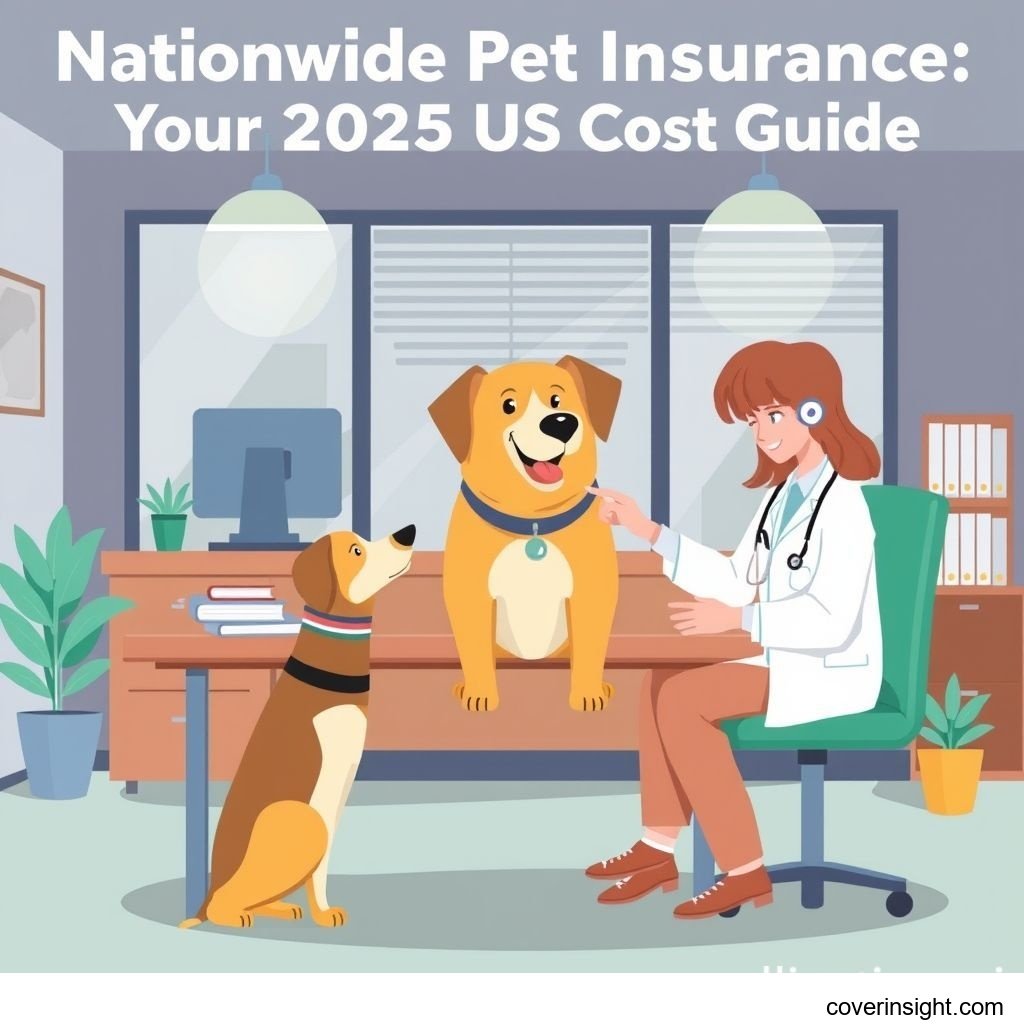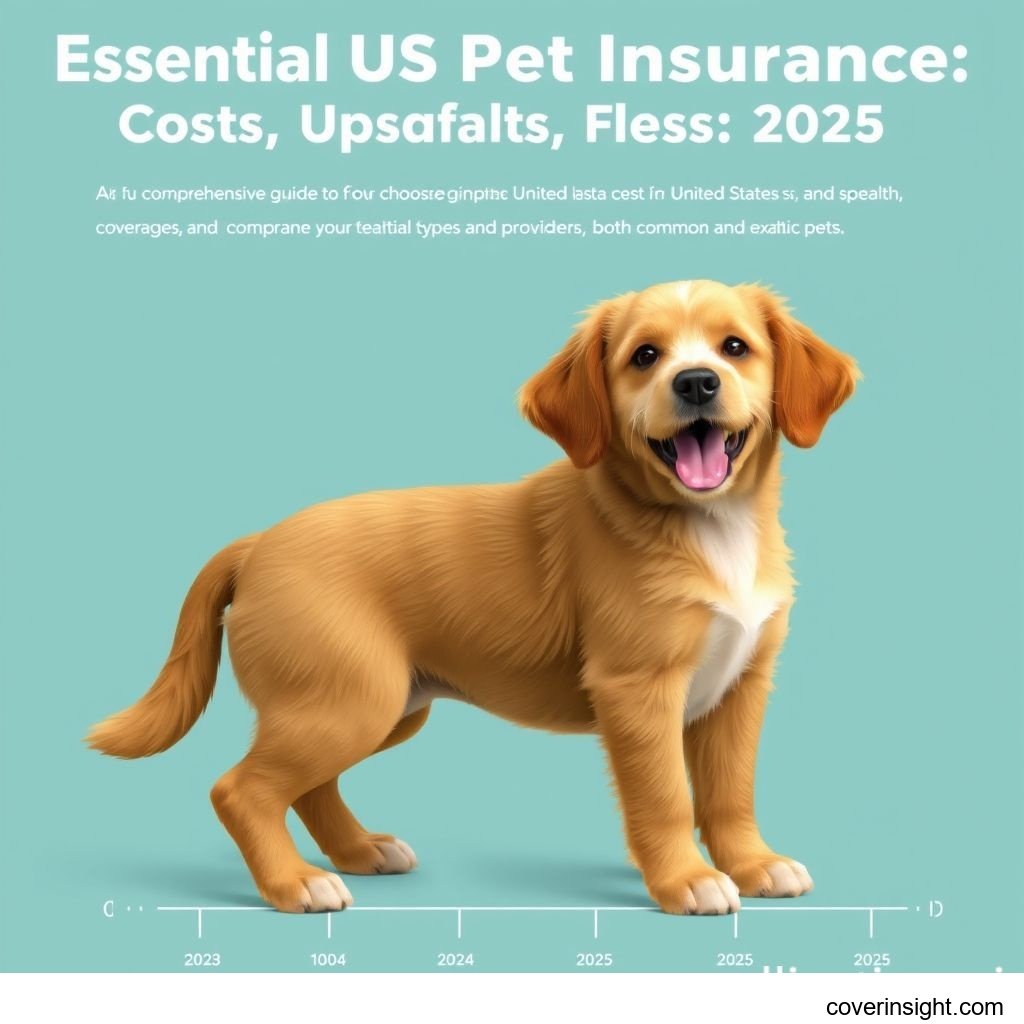Introduction
As 2025 approaches, the landscape of pet care continues to evolve, making true companion pet insurance more vital than ever for pet parents across the US. Our furry, feathered, or scaled friends are integral family members, and their health and well-being are paramount. Unexpected veterinary bills can be a significant financial burden, often leading to difficult decisions. This is where a robust pet insurance policy steps in, offering peace of mind and ensuring your beloved animal receives the best possible care without compromising your financial stability. Choosing the right pet insurance plan is a critical decision that can safeguard your pet's future and your wallet. Investing in true companion pet insurance is a proactive step toward responsible pet ownership, helping you manage the unpredictable costs associated with illnesses, accidents, and even routine wellness.
Understanding True Companion Pet Insurance Coverage
Securing appropriate pet insurance is about more than just paying premiums; it's about understanding what benefits you're truly getting. True companion pet insurance plans are designed to help you cover the costs of veterinary care, offering various levels of protection for your cherished pets.
What’s Included
Most comprehensive true companion pet insurance policies provide extensive coverage for a wide range of medical conditions and treatments. These typically include:
-
Accidents: Injuries such as broken bones, swallowed objects, snake bites, or car accidents. This often covers emergency visits, diagnostics (X-rays, ultrasounds), surgeries, hospitalization, and follow-up care.
-
Illnesses: Conditions like ear infections, allergies, digestive issues, cancer, diabetes, arthritis, and skin conditions. Coverage extends to diagnosis, medication, specialist consultations, and ongoing treatments.
-
Emergency Care: Urgent veterinary visits for sudden and severe conditions.
-
Surgeries: Costs related to necessary surgical procedures, including anesthesia and post-operative care.
-
Prescription Medications: Drugs prescribed by a veterinarian for covered conditions.
-
Diagnostic Tests: Blood tests, urinalysis, MRI, CT scans, and other imaging.
-
Specialist Referrals: Visits to veterinary specialists like cardiologists, dermatologists, or oncologists.
-
Hereditary and Congenital Conditions: While often subject to waiting periods, many policies cover conditions your pet is predisposed to or was born with, provided they are not pre-existing.
For those looking for proactive care, some plans offer optional add-ons, often called "wellness plans." These can cover:
- Routine check-ups and annual exams.
- Vaccinations and booster shots.
- Flea, tick, and heartworm prevention.
- Dental cleanings.
- Spaying or neutering.
Chronic Condition Coverage Explained
A crucial aspect of any comprehensive plan is chronic condition coverage. Chronic conditions are long-term illnesses that require ongoing management, such as diabetes, arthritis, allergies, or certain heart conditions. While many policies exclude pre-existing conditions (those diagnosed before coverage begins or during a waiting period), a good true companion pet insurance policy will cover chronic conditions that develop after enrollment and completion of the waiting period. This means that if your pet develops a new chronic illness, the policy will continue to cover the necessary treatments, medications, and veterinary visits for the duration of their life, provided you maintain continuous coverage. When evaluating plans, always inquire specifically about how they handle recurring treatments for long-term health issues to ensure your pet has consistent support.
Common Exclusions
While true companion pet insurance offers broad protection, it's equally important to understand what is generally not covered:
-
Pre-Existing Conditions: Any illness or injury that occurred or showed symptoms before your policy began or during the waiting period. Some providers may differentiate between curable and incurable pre-existing conditions, potentially covering the former after a certain symptom-free period.
-
Cosmetic Procedures: Elective surgeries such as declawing, ear cropping, or tail docking.
-
Breeding and Whelping: Costs associated with pregnancy, birth, or breeding.
-
Experimental Treatments: Therapies not yet widely accepted in veterinary medicine.
-
Grooming: Routine grooming services like baths or nail trims.
-
Specific Exclusions: Some policies might exclude certain conditions common to a particular breed or specific treatments based on their terms. Always read the fine print.
Understanding these inclusions and exclusions is key to selecting a plan that truly meets your needs and expectations for your animal companion.
Cost Analysis of True Companion Pet Insurance
The cost of true companion pet insurance can vary significantly based on several factors. Understanding these elements will help you make an informed decision and find a plan that aligns with your budget.
Price Factors
The premium you pay for true companion pet insurance is influenced by a combination of variables:
-
Pet's Breed: Certain breeds are predisposed to specific health issues, making their insurance more expensive. For instance, large breeds might be prone to hip dysplasia, while some purebreds are susceptible to hereditary conditions.
-
Pet's Age: Younger pets generally have lower premiums as they are less likely to have existing health problems. Premiums typically increase as pets age due to the higher likelihood of developing illnesses.
-
Location: Veterinary costs vary by region, and this is reflected in insurance premiums. Urban areas with higher living costs often have more expensive pet care and, consequently, higher insurance rates.
-
Deductible: This is the amount you must pay out-of-pocket before your insurance coverage kicks in. A higher deductible typically results in a lower monthly premium.
-
Reimbursement Level: This is the percentage of the vet bill your insurer will cover after your deductible is met (e.g., 70%, 80%, 90%). A higher reimbursement level means higher premiums.
-
Annual Limit: This is the maximum amount your policy will pay out in a given year. Plans with higher annual limits usually have higher premiums. Some plans offer unlimited annual benefits.
-
Type of Plan: Comprehensive plans covering accidents and illnesses are more expensive than accident-only plans. Wellness add-ons also increase the overall cost.
Saving Tips
While pet insurance is an investment, there are ways to manage costs without compromising the quality of care for your true companion:
-
Choose a Higher Deductible: If you're comfortable with a larger out-of-pocket expense in case of a claim, a higher deductible will lower your monthly premiums.
-
Opt for a Lower Reimbursement Percentage: Accepting a 70% or 80% reimbursement rate instead of 90% can reduce your premium.
-
Consider an Accident-Only Plan: If your primary concern is catastrophic injury rather than general illness, an accident-only policy is significantly more affordable.
-
Multi-Pet Discounts: Many providers offer discounts if you insure multiple pets under the same policy.
-
Pay Annually: Some companies provide a discount if you pay your premium once a year instead of monthly.
-
Enroll When Your Pet is Young: Locking in a lower premium when your pet is a puppy or kitten can save money over their lifetime, as rates generally increase with age.
-
Maintain Good Preventative Care: Keeping your pet healthy through regular vet visits, proper nutrition, and exercise can reduce the likelihood of costly illnesses down the road. This proactive approach supports your pet's well-being and potentially lowers your need for extensive insurance claims.
Navigating Accident-Only vs Comprehensive True Companion Pet Insurance
Understanding the different types of true companion pet insurance plans available is crucial for making the best choice for your pet and your budget. The primary distinction lies between accident-only coverage and comprehensive plans.
Accident-Only vs Comprehensive Plans
This is one of the most significant decisions you'll make when selecting true companion pet insurance. Each type offers distinct levels of protection:
Accident-Only Pet Insurance:
-
Focus: Primarily covers costs related to unexpected injuries and emergencies.
-
Examples: Broken bones, cuts, swallowed objects, poisoning, car accidents, snake bites.
-
Cost: Generally much more affordable than comprehensive plans.
-
Limitations: Does not cover illnesses, chronic conditions, or routine care.
Comprehensive Pet Insurance:
-
Focus: Provides broad coverage for both accidents and illnesses.
-
Examples: Includes everything covered by accident-only plans, plus illnesses like cancer, diabetes, arthritis, allergies, ear infections, and digestive issues.
-
Cost: More expensive than accident-only plans due to the extensive coverage.
-
Benefits: Offers the most extensive financial protection against a wide range of veterinary expenses. Many policies will include chronic condition coverage for conditions that develop after enrollment, ensuring ongoing support.
When deciding between accident-only vs comprehensive plans, consider your pet's age, breed, lifestyle, and your financial comfort level. For pets that spend a lot of time outdoors or are prone to adventurous mishaps, accident-only might seem appealing. However, comprehensive plans offer peace of mind for the inevitable illnesses that can arise at any stage of life.
Evaluating Providers
Choosing the right provider for your true companion pet insurance requires careful consideration beyond just the premium. Look into these aspects:
-
Reputation and Reviews: Research customer feedback and ratings from reliable sources like the Better Business Bureau (BBB) or independent review sites. A company with a strong track record of positive customer experiences is a good sign.
-
Customer Service: Assess their accessibility and responsiveness. Do they offer 24/7 support? Are their representatives knowledgeable and helpful?
-
Claims Process: Understand how easy it is to file a claim. Is it done online, via an app, or do you need to mail forms? What is the typical reimbursement timeframe? A streamlined process can save you significant stress during a difficult time.
-
Policy Customization: Can you adjust deductibles, reimbursement percentages, and annual limits to fit your budget?
-
Waiting Periods: Be aware of the waiting periods for accidents, illnesses, and specific conditions like hip dysplasia. These periods can vary significantly between providers.
-
Network Restrictions: Most pet insurance plans allow you to visit any licensed veterinarian, which is a major advantage over human health insurance. Confirm this flexibility.
For more information on insurance regulations and consumer rights, you can consult authoritative external sources like the National Association of Insurance Commissioners. This resource provides valuable insights into the insurance industry and how it's regulated across states.
Tailoring Your True Companion Pet Insurance
Customizing your true companion pet insurance policy ensures it meets your specific needs. Here's how to tailor your plan:
-
Assess Your Pet's Needs: Consider their breed-specific health risks, current health status, and age. An active, large-breed puppy might benefit from high accident coverage, while an older cat might need more illness and chronic condition support.
-
Define Your Budget: Determine how much you can comfortably afford to pay monthly or annually for premiums.
-
Choose Your Deductible and Reimbursement: Balance lower premiums with your willingness to pay out-of-pocket for veterinary care.
-
Consider Annual Limits: Decide if you prefer a lower annual limit for a cheaper premium or an unlimited option for maximum protection against catastrophic costs.
-
Evaluate Add-ons: Decide if optional wellness plans or specific riders (e.g., for rehabilitation, behavioral therapy) are worth the additional cost for your pet.
By thoughtfully evaluating these factors, you can build a true companion pet insurance policy that provides optimal protection for your beloved pet without overextending your finances.
Maximizing Your True Companion Pet Insurance Benefits
Having true companion pet insurance is only half the battle; knowing how to utilize it effectively is key to maximizing its benefits and ensuring your pet receives timely care.
Submitting a Claim
The claims process for true companion pet insurance is generally straightforward, but understanding the steps can expedite your reimbursement:
-
Pay Your Vet Bill: Most pet insurance works on a reimbursement model. You pay the veterinary bill in full at the time of service.
-
Gather Documentation: Collect an itemized invoice from your vet, detailing all services, treatments, and medications. You'll also need your pet's medical records pertaining to the condition.
-
Complete the Claim Form: Fill out the claim form provided by your insurer. This can often be done online through their portal or app.
-
Submit Your Claim: Attach the invoice and medical records to your completed claim form and submit it according to your insurer's instructions.
-
Await Reimbursement: The insurer will review your claim, apply your deductible and reimbursement rate, and send you a check or direct deposit.
It's wise to keep meticulous records of all vet visits, invoices, and communications with your insurance provider. For additional guidance on managing healthcare expenses, including insights that can be adapted for pet care, consider resources like Healthcare.gov. While focused on human health, the principles of understanding coverage and claims often overlap.
Understanding Reimbursement
Understanding how reimbursement works is critical to managing your expectations and finances:
-
Deductible: This is the fixed amount you pay before your insurance starts covering costs. Some plans have an annual deductible, meaning you pay it once per policy year, regardless of how many conditions arise. Others may have a per-condition deductible, meaning you pay it for each new illness or accident.
-
Reimbursement Percentage: After your deductible is met, the insurer pays a percentage of the remaining eligible costs. If you have an 80% reimbursement rate and a $1000 eligible bill (after deductible), the insurer pays $800.
-
Annual Limit: This is the maximum amount your policy will pay out in a 12-month period. Once this limit is reached, you are responsible for all further costs until the policy renews. Some policies offer unlimited benefits, providing ultimate peace of mind.
These three components – deductible, reimbursement rate, and annual limit – are the main levers that determine your out-of-pocket costs and your premium.
The Future of True Companion Pet Insurance
The market for true companion pet insurance is rapidly expanding and innovating. Future trends suggest:
-
Increased Personalization: More tailored plans based on specific breed risks, lifestyle, and even genetic predispositions.
-
Integration with Telemedicine: Greater acceptance and coverage for virtual vet consultations.
-
Preventative Care Emphasis: More comprehensive wellness plans and incentives for proactive health management.
-
Blockchain for Claims: Potentially faster, more transparent, and secure claims processing.
-
Behavioral Therapy Coverage: Growing recognition of mental health and behavioral issues in pets.
Staying informed about these developments will help you continue to make smart choices for your pet's coverage. For broader insurance information, including state-specific resources, consider exploring your State Insurance Departments via the NAIC website.
FAQs
Navigating the world of pet insurance can bring up many questions. Here are answers to some frequently asked questions about true companion pet insurance in the US for 2025:
How much does true companion pet insurance cost?
The cost of true companion pet insurance varies significantly. On average, you can expect to pay between $30-$50 per month for dogs and $15-$30 per month for cats for a comprehensive policy. However, this can be higher or lower depending on your pet's breed, age, location, and the specific deductible, reimbursement level, and annual limit you choose. For instance, insuring a young, healthy mixed-breed cat might be at the lower end of the spectrum, while a senior purebred dog with potential health predispositions could be at the higher end.
What affects true companion pet insurance premiums?
Several factors influence your true companion pet insurance premiums:
-
Pet's Species, Breed, and Age: Dogs are generally more expensive to insure than cats, and certain breeds have higher rates due to genetic predispositions to illnesses. Older pets also have higher premiums.
-
Geographic Location: Veterinary costs vary by region, impacting insurance prices.
-
Deductible, Reimbursement Rate, and Annual Limit: Opting for a higher deductible, lower reimbursement rate, or lower annual limit will result in lower monthly premiums.
-
Type of Coverage: Accident-only plans are cheaper than comprehensive plans, and adding wellness packages increases costs.
Is true companion pet insurance mandatory?
No, true companion pet insurance is not mandatory in the United States. Unlike auto insurance in most states, pet insurance is an optional financial product. However, many pet owners choose to purchase it to mitigate the high costs of unexpected veterinary care, which can easily run into thousands of dollars for emergencies or chronic conditions. It's a personal choice based on your financial preparedness and desire for peace of mind regarding your pet's health.
How to choose the best true companion pet insurance?
Choosing the best true companion pet insurance involves several key steps:
-
Assess Your Pet's Needs: Consider their breed, age, and existing health.
-
Determine Your Budget: How much can you comfortably spend monthly?
-
Compare Quotes: Obtain quotes from at least 3-5 different reputable providers.
-
Read the Fine Print: Pay close attention to deductibles, reimbursement rates, annual limits, waiting periods, and exclusions (especially for pre-existing conditions and chronic condition coverage).
-
Check Reputation and Customer Service: Look for reviews and evaluate their claims process.
-
Consider Accident-Only vs Comprehensive: Decide which level of coverage best suits your risk tolerance.
What are the consequences of having no true companion pet insurance?
Without true companion pet insurance, you are fully responsible for 100% of your pet's veterinary bills. This can lead to significant financial strain, especially during emergencies or if your pet develops a serious or chronic condition coverage requiring long-term treatment. Many pet owners face difficult choices between providing necessary, expensive medical care and their financial limitations. In some unfortunate cases, this can lead to euthanasia or surrendering a pet if treatment costs are prohibitive. Having insurance provides a financial safety net, allowing you to prioritize your pet's health without immediate financial distress.
Conclusion
Making smart choices for your 2025 true companion pet insurance coverage is a proactive step towards responsible pet ownership. By thoroughly understanding the nuances of different plans, from accident-only to comprehensive options covering chronic condition coverage, you can protect both your beloved animal and your financial well-being. Evaluating cost factors, exploring saving tips, and diligently comparing providers will empower you to select a policy that perfectly aligns with your budget and your pet's needs. The peace of mind that comes with knowing you can afford the best possible care for your pet is invaluable. Don't wait for an emergency; start exploring your options for true companion pet insurance today to ensure a healthy and happy future for your cherished companion.










Comments